Understanding Employer Liability Insurance: Protecting Businesses and Employees
Employer Liability Insurance
Employer liability insurance, also known as employment practices liability insurance (EPLI), is a type of insurance that protects businesses from claims made by employees for work-related injuries or damages. It covers legal costs and settlements that arise from allegations of wrongful termination, discrimination, harassment, or other employment-related issues.
The main purpose of employer liability insurance is to protect businesses from financial loss and reputational damage resulting from employee claims. It provides coverage for legal defense costs, settlements, and judgments that may arise from such claims.
Types of Employer Liability Insurance
-
Employment Practices Liability Insurance (EPLI)
EPLI is a specific type of employer liability insurance that focuses on claims related to employment practices. It covers claims made by employees for wrongful termination, discrimination, sexual harassment, retaliation, and other workplace-related issues. EPLI also provides coverage for claims made by third parties, such as customers or clients, who allege mistreatment by employees.
-
Workers' Compensation Insurance
Workers' compensation insurance is another type of employer liability insurance that provides coverage for work-related injuries or illnesses suffered by employees. It covers medical expenses, rehabilitation costs, and lost wages resulting from the injury or illness. Workers' compensation insurance is required by law in most states and helps protect both employees and employers in the event of a workplace accident.
Legal Requirements and Coverage Details
-
Legislation Surrounding Employer Liability Insurance
The legal requirements for employer liability insurance vary by jurisdiction. In the United States, for example, each state has its own laws and regulations regarding workers' compensation insurance. Some states require employers to carry workers' compensation insurance regardless of the size of their business, while others have specific thresholds based on the number of employees.
-
Common Injuries Covered
Employer liability insurance typically covers a wide range of injuries and damages suffered by employees. Common examples include slip and fall accidents, repetitive strain injuries, workplace violence, exposure to hazardous substances, and occupational diseases. The specific injuries covered may vary depending on the insurance policy and the jurisdiction.
How to Choose the Right Employer Liability Insurance
-
Assessing the Needs of Your Business
When choosing employer liability insurance, it is essential to assess the specific needs of your business. Consider factors such as the size of your workforce, the nature of your business operations, and the potential risks involved. For example, a manufacturing company may have different insurance needs compared to a professional services firm.
-
Comparing Insurance Policies and Quotes
To choose the right employer liability insurance, it is advisable to compare policies and quotes from multiple insurance providers. Consider factors such as coverage limits, deductibles, exclusions, and the reputation and financial stability of the insurance company.
The Claims Process and Coverage Limits
-
Submitting a Claim
In the event of an employee claim, it is crucial to understand the claims process of your employer liability insurance policy. Familiarize yourself with the requirements for submitting a claim, including the documentation and evidence needed to support the claim. Promptly report any incidents or injuries to your insurance provider to ensure a smooth claims process.
-
Factors That Can Affect the Outcome
Several factors can affect the outcome of an employer liability insurance claim. The insurance provider will evaluate the circumstances surrounding the claim, including the severity of the injury or damages, the extent of negligence or liability on the part of the employer, and any relevant laws or regulations. It is important to cooperate fully with the insurance provider during the claims process and provide all necessary information and documentation.
Employer Liability Insurance for Small Businesses
-
Examples of Financial Institutions That Offer EPLI Coverage
Small businesses often face unique challenges when it comes to employer liability insurance. However, many financial institutions offer EPLI coverage specifically designed for small businesses. Some examples of financial institutions that offer EPLI coverage include Wells Fargo, Bank of America, and USAA.
Cost Considerations
-
Understanding the Costs of Employer Liability Insurance
The cost of employer liability insurance can vary significantly depending on various factors, including the size of the business, the industry, the number of employees, and the claims history. Insurance providers assess these factors to determine the level of risk associated with insuring a particular business and calculate the premiums accordingly.
-
Factors That Can Affect Your Premiums
Several factors can affect the premiums of employer liability insurance. These include the level of coverage selected, the deductible amount, the claims history of the business, the industry's risk profile, and the jurisdiction's legal requirements. Taking steps to mitigate risks, such as implementing robust safety protocols and training programs, can help reduce premiums over time.
Conclusion
In conclusion, employer liability insurance is a critical component of risk management for businesses, providing protection against employee claims for injuries or damages suffered on the job. By understanding the types of employer liability insurance, legal requirements, coverage details, and cost considerations, businesses can make informed decisions to protect themselves and their employees.
Choosing the right employer liability insurance involves assessing the needs of your business, comparing policies and quotes, and understanding the claims process and coverage limits. It is also important to consider the unique requirements of small businesses and explore options specifically tailored to their needs.
Ultimately, investing in employer liability insurance is crucial for the long-term success and sustainability of businesses. It not only helps protect the financial well-being of the company but also demonstrates a commitment to the safety and well-being of employees. By prioritizing employer liability insurance, businesses can create a secure and supportive work environment for their employees, leading to increased productivity and employee satisfaction.





No comments